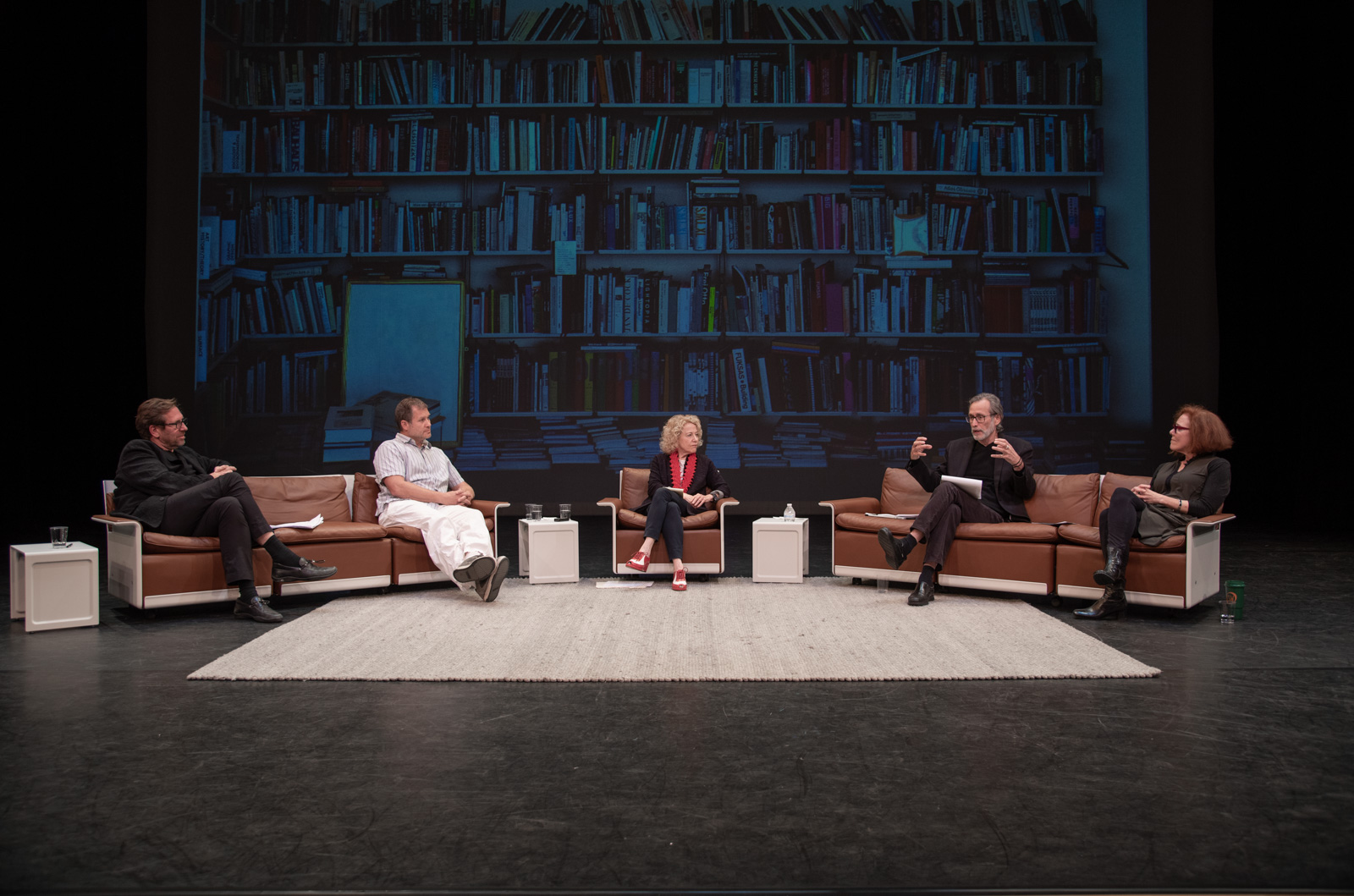’10 Questions’ beholds beauty in film, theater, art and evolutionary biology

UCLA faculty from different fields such as film and ecology and evolutionary biology responded to the question “What is beauty?” at the panel Tuesday. (Courtesy of Hannah Burnett/UCLA Arts)
By Tabatha Lewis-Simó
Oct. 18, 2018 2:19 a.m.
This post was updated Oct. 24 at 9:05 p.m.
The “10 Questions” lecture series, which will address a different question each week, doubles as a course for students and a panel open to the public. The series will explore open-ended questions such as “What is beauty?”, “What is failure?” and “What is knowledge?”
Each week’s panel will feature two faculty members from the School of the Arts and Architecture and two faculty members from other departments who will approach the question of the week from the perspective of their academic disciplines.
UCLA faculty from diverse fields such as film and ecology and evolutionary biology responded to the question, “What is beauty?” at the panel Tuesday.
Kathleen McHugh, professor and chair of film, television and digital media, defined beauty in the context of cinema. She said the perceiver of beauty is moved to act, seduce and contemplate the beautiful object, while the role of the object is merely to exist.
McHugh said this concept of beauty is gendered and racialized in Hollywood. She said in movies, white men typically initiate the action while white women are perceived as beautiful objects to be acted upon.
J. Ed Araiza, head of the UCLA School of Theater, Film and Television’s MFA acting program, defined beauty in the context of theater and said beauty can be found in the process of striving for beauty.
Araiza showed the audience the rehearsal process for a play, but did not show the final production. Araiza said he found the rehearsal process more exciting and meaningful than the end product.
“(I see) beauty in expressing yourself through pain and suffering because that is a large part of an artist’s life,” Araiza said.
Marla Berns, the director of the Fowler Museum and an adjunct professor of art history, talked about how people from different cultures modify their bodies in accordance with their cultures’ different perceptions of beauty. Berns showed images of people who underwent scarification, a process in which the skin is wounded and the healing process stunted so that the skin may form visible protrusions, thereby allowing for geometric designs to be scarred onto the body. Berns said these scars mark the transition from childhood to adulthood in certain cultures.
Paul Barber, a professor of ecology and evolutionary biology, approached beauty from a biological perspective. Barber showed pictures of different origami folds and said they were examples of how complex features can result from simple materials and designs. He then said this concept of beauty behind origami can be found in nature and showed an image of a ladybug opening its folded wings and taking flight as an example.
Barber gave an example of the biological component of attraction in humans. In a study, researchers had people wear the same T-shirt for a week and place it in a bag. Other people then had to rate how attractive that person is based on the smell of the T-shirt. It turns out the smell is related to the person’s immune function, but people do not think of all this when they think someone smells good and are attracted to them.
Barber said people have to acknowledge the social aspect of beauty is now more important than the biological aspect.
“I think that some people feel the burden of beauty more than others,” Barber said. “I think that is something inherent in human society in general and is not talked about.”
Asavari Tika, a fourth-year neuroscience student, said after the panel she thought beauty was less simple than she originally believed.
“I used to think beauty was easy and breezy,” Tika said. “But after the conversation (I thought) about how it comes from adversity – I think that’s true.”


